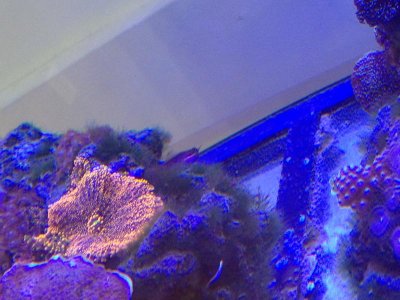NOPOX is a carbon source, right? It may be leaving enough PO4 to feed the Big B.
This is how I won:
-Cleaned the tank of detrius
-Pulled off all algae I could by hand
-Removed rocks I could & spot treated affected areas with Hydrogen Peroxide & scrubbed the area with a very stiff plastic brush. Treated spots again. Rinsed off rock in a tub of change salt water, shaking off additional detrius. Bry. is gone - a fresh start but a big job.
-Ran mechanical filtration. (Floss or sock cleaning frequently) it's important to catch detrius & small Bry. fragments.
-Ran GFO in a reactor and lots of it. This is no time to be a cheapskate. If you don't change it out quickly enough it will come back & you will fail - so it's best to test water with a low range phosphate meter to time replacement and keep levels as low as you can. You absolutely must not let it regain a foothold. If don't want to pay for a meter I'd change it out every 10 days in the begining. GFO doesn't kill the Bry. right away but will starve it. The real killing is done by you and the GFO keeps it from spreading and any old remnants will slowly fade away & die.
-While running the GFO I did one full tank treatment of peroxide to knock out a few small patches that were missed previously.
-During this time I used a few complimentary tactics: Less feeding, a 3 day lights out period and added a good powerhead for better flow. The most important was "blowing off" the rocks every few days and capturing the junk by mechanical filtration. Detrius sitting on a rock among the rhizomes of Bryopsis is like putting fertilizer over the root zone of garden plants.
Keep removing any little strands that may pop up here & there. Over time you can change out the GFO less often but never let it exhaust and leave it unattended because the BigB will be back if you do.
CAUTION: RESEARCH PEROXIDE USE BEFORE USING. It can harm some inverts and be hard on some corals if one is not careful, but this can be prevented. This is especially true if attempting full tank dosimg. But it is 100% non toxic and has no long term side effects. Large quantities of GFO are said to stress & imoeril some corals so you may wish to "phase it in" but I didn't have much of a problem, although I stressed & nearly killed a skunk cleaner shrimp (I would remove shrimp & crabs if I ever did full tank peroxide again).
Good luck.

